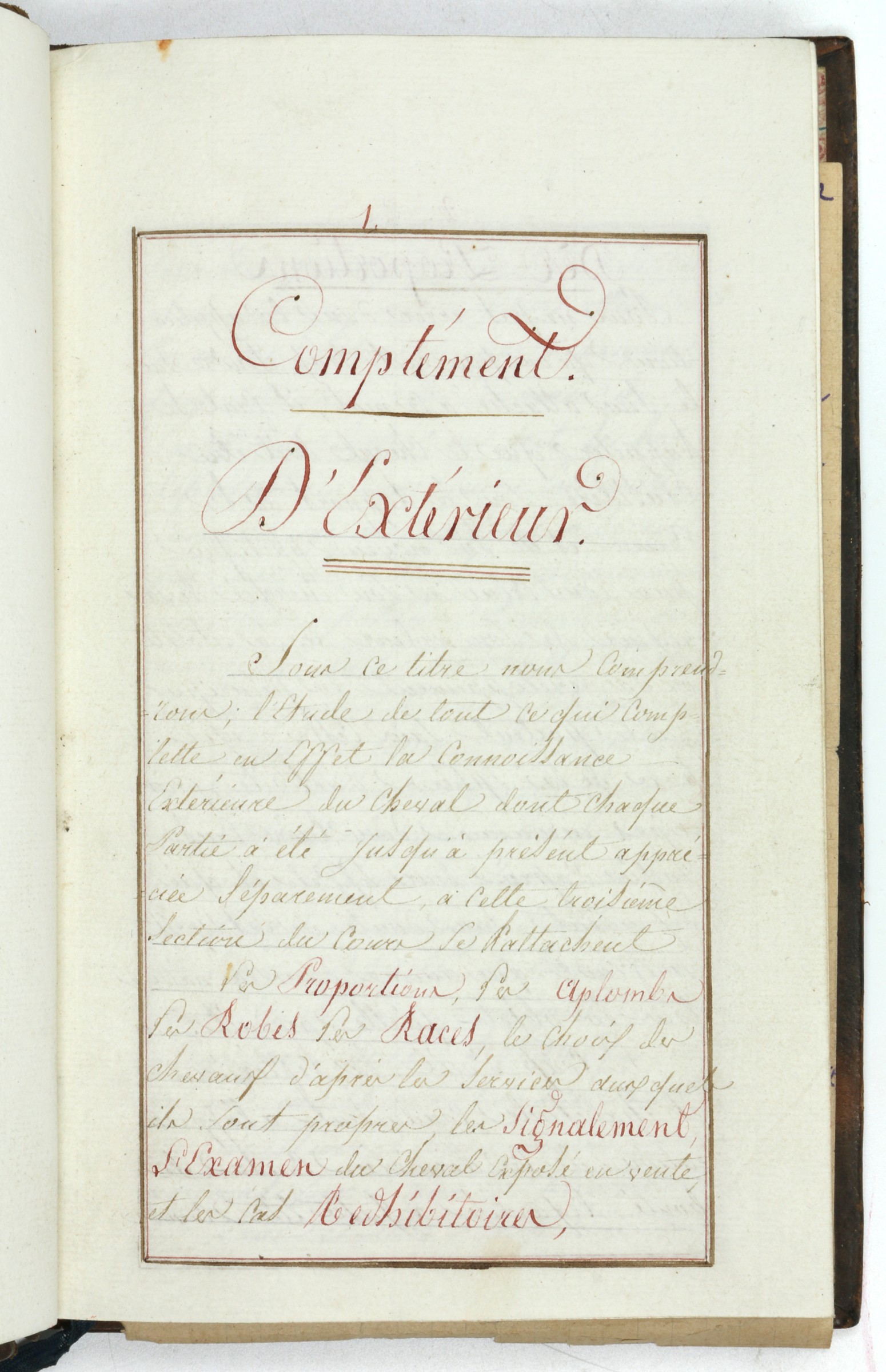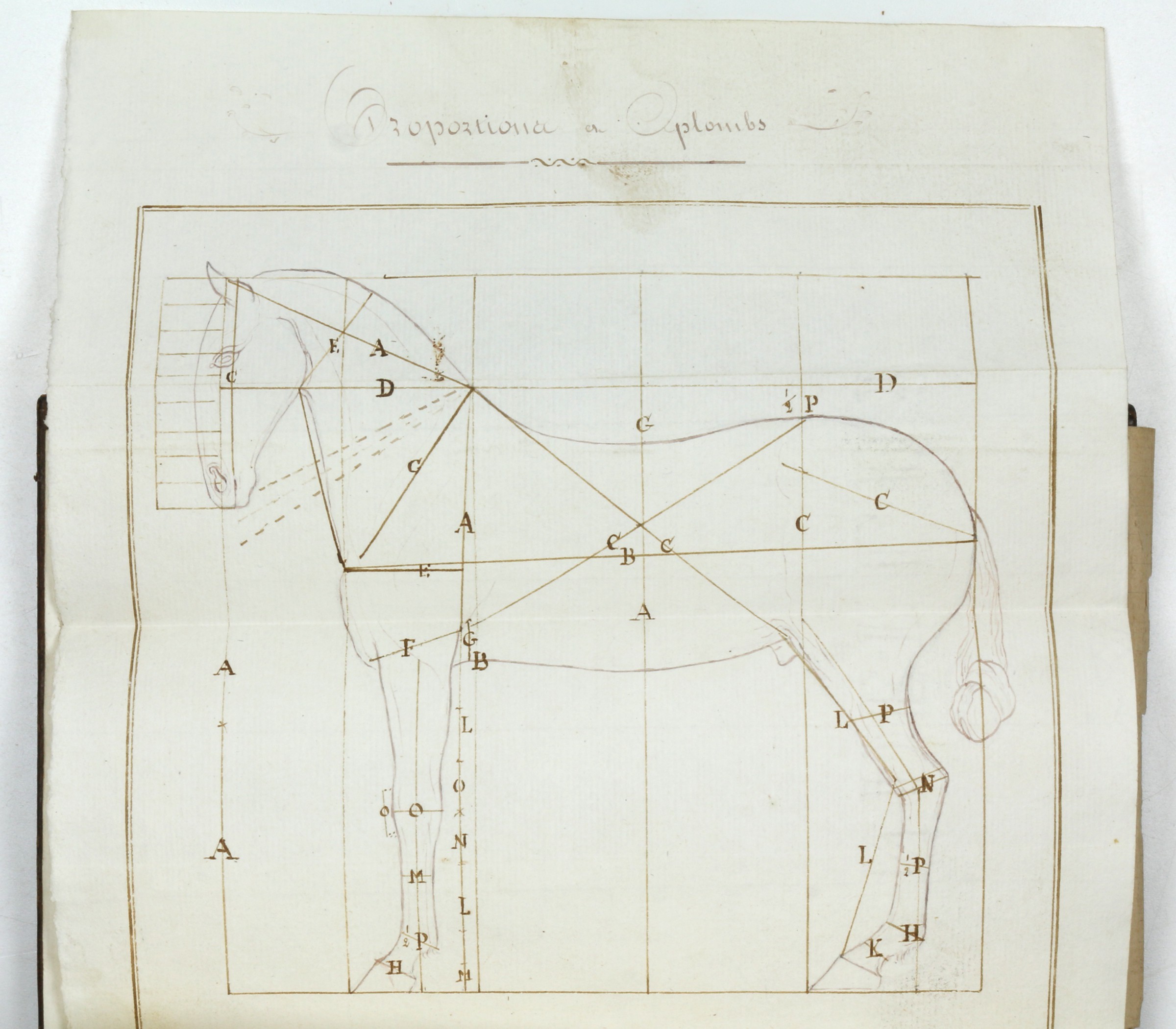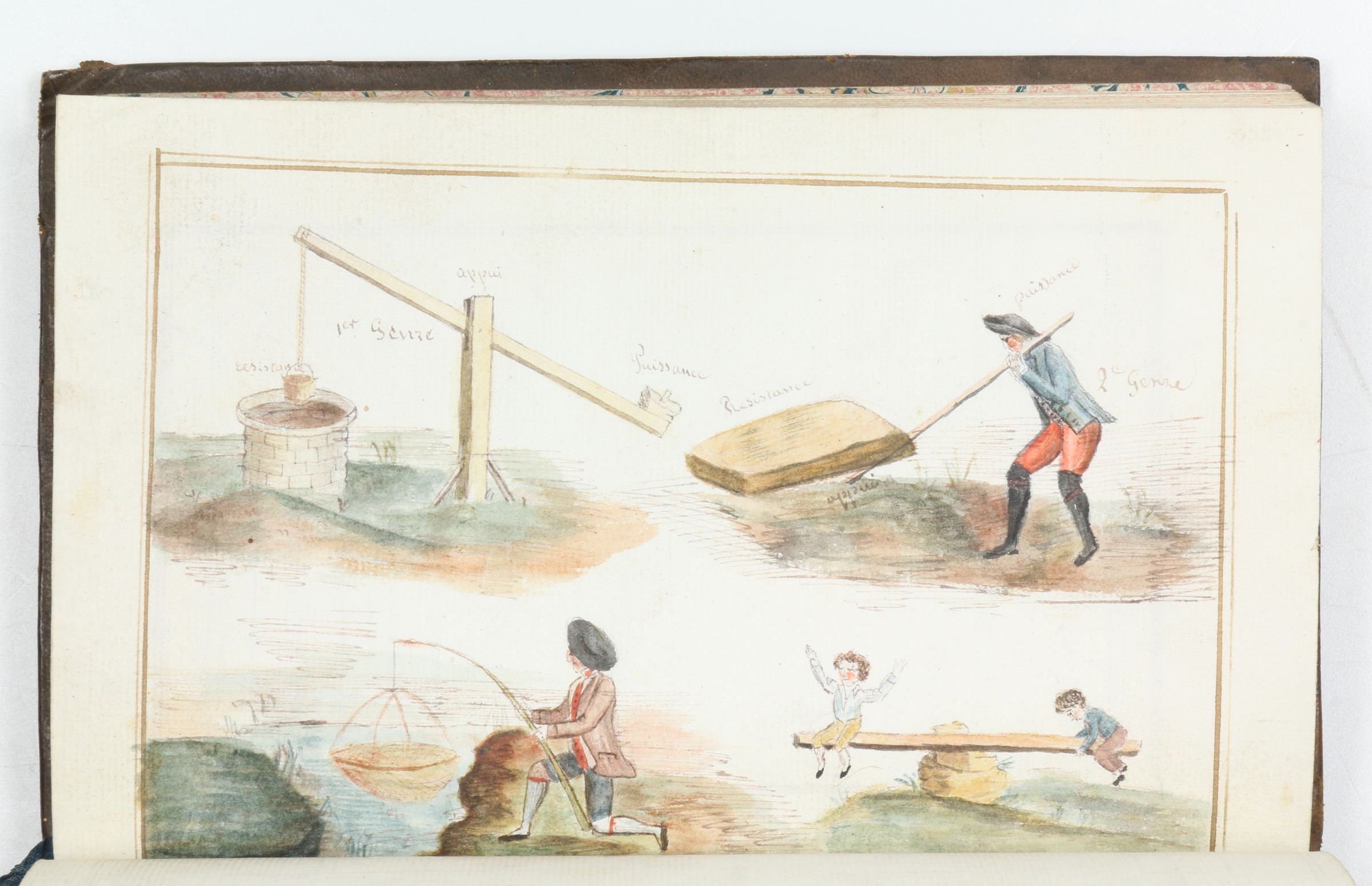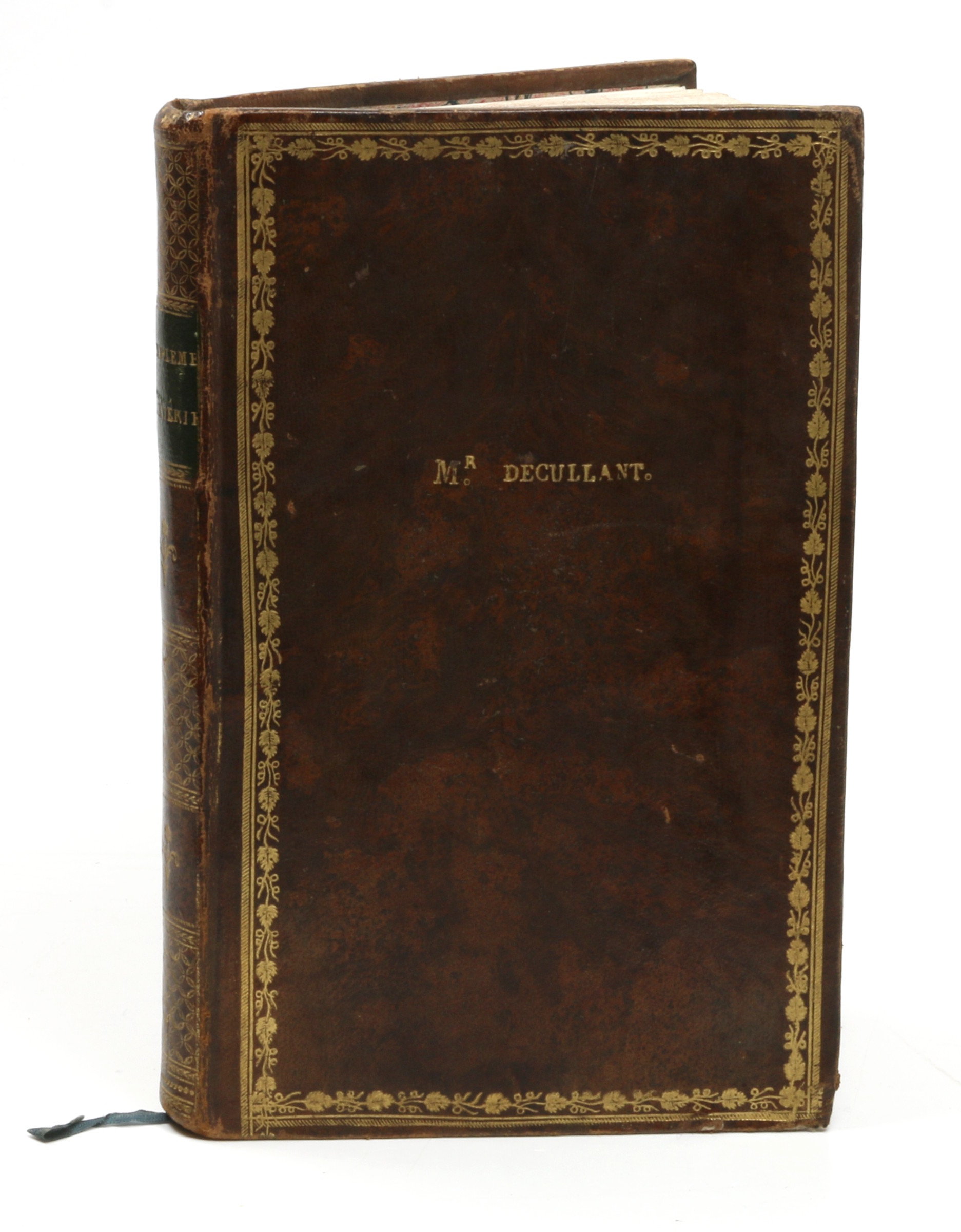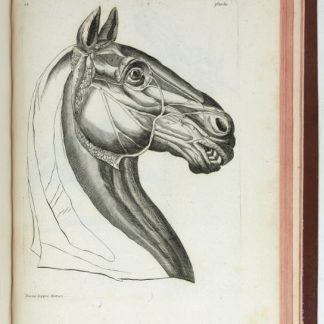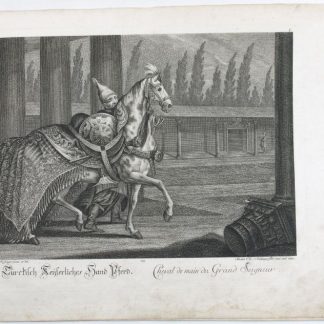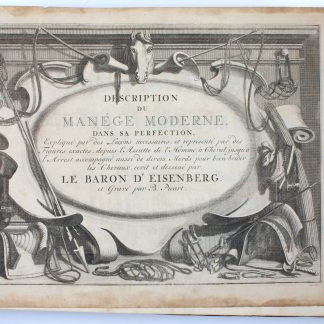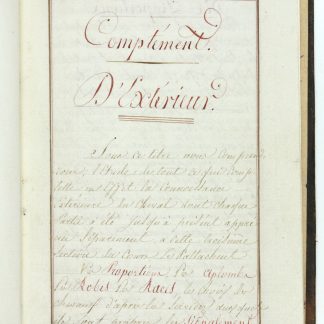French horse manuscript
Comptément d'Extérieur.
8vo. French manuscript on paper. 216 pp. Text in brown ink with some word highlighted in red, enclosed within red and brown borders. With 5 hand-drawn plates, one of which folding, one in original hand colour. Contemporary full calf with gilt spine and green morocco label; name "Mr Decullant" gilt to upper cover within florally gilt borders; leading edges gilt. Marbled endpapers. All edges lightly sprinkled red.
€ 9,500.00
Unpublished hippological manuscript in neat French calligraphy, discussing horse breeds, proportions, balance, paces, coats, horseshoes, and warranty issues. A separate section on Arabian horses discusses the breeders' practice of issuing certificates of authenticity for each individual animal, as well as that of branding: "L'origine des individus [...] est attestée par des Certificats à l'authenticité des quels ils tiennent avec une Extrème Rigeur, ils les marquent de plus au feu sur nombre d'endroits du Corps" (p. 109f.). The Arabian horse is singled out for its speed and praised for its boldness, as are the riders' impressive skills, envied by many a European army: "Nos armées ont admiré [...] et deploré souvent, cette petulance des chevaux, aussi bien que la Bravour de leurs Cavaliers pour qu'il soit Bésoin d'en faire un éloge plus pompeux" (p. 111). Furthermore, the author collects useful advice for buying horses and on distinguishing features to appreciate, including various deformities to be considered. The drawings illustrate the horse's proportions, displaying the animal in profile, from front and from behind; they also show the effects of leverage and equilibrium, and illustrate basic concepts of geometry. Throughout the text, the author repeatedly refers to hippiatric authorities such as the veterinarians Charles Bourgelat (1712-79), François Alexandre de Garsault (1691-1778), and Philippe-Étienne Lafosse (1738-1820). The wording "cette troisième section du cours" (p. 1) suggests that the present manuscript was conceived as part of a series of hippological textbooks, but no publication could be traced, nor could the author be identified.
Early 20th century handwritten notes on the treatment of a riding horse, probably transcribed from another work, loosely inserted. Extremities slightly rubbed, interior crisp and clean. A unique survival.

